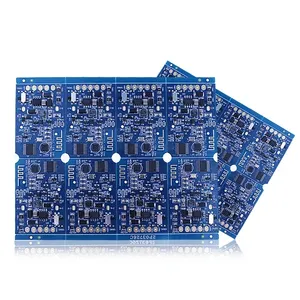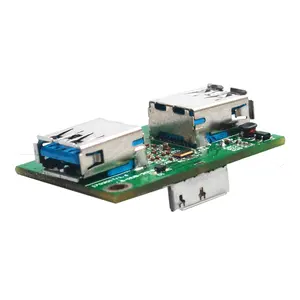
Professional Custom High Frequency Fr4 PCB Hdi Assembly Manufacturing Pcba Multilayer PCB Circuit Board


Support One-Stop OEM Service Pcb Pcba Manufacturing PCB Circuit Board Good Price Assembly Printed Circuit Boards PCBA























The realm of electronic components is vast and intricate, with USB power PCBs standing as a crucial category within this domain. These printed circuit boards (PCBs) are specialized platforms designed to manage and distribute power through USB (Universal Serial Bus) connections. Essential for a myriad of electronic devices, USB power PCBs serve as the backbone for power delivery and management in modern electronics.
USB power PCBs come in various forms, catering to a broad spectrum of applications. From powering small electronic devices to serving as integral components in complex communication systems, their versatility is unmatched. Users can select from a range of options such as single-sided, double-sided, or multi-layer PCBs, each suited for different electronic device requirements. The application of these PCBs spans across electronic gadgets, communication hardware, and OEM electronics, highlighting their adaptability in the tech industry.
The construction of a USB power PCB involves several materials, each selected for its properties that contribute to the board's performance and durability. Common materials include FR4, a glass-reinforced epoxy laminate, known for its electrical insulation and mechanical strength. The surface finish, often HASL (Hot Air Solder Leveling), ensures reliable solderability and a long shelf-life. Features such as copper thickness, solder mask, and silkscreen can be customized to meet specific power requirements and design considerations.
Opting for a USB power PCB in electronic designs brings numerous advantages. These boards are engineered for efficient power distribution, ensuring devices operate effectively without the risk of power surges or shortages. Their compact size allows for sleeker device designs, while the standardized USB interface ensures compatibility across various gadgets. Moreover, the robust nature of these PCBs contributes to the longevity and reliability of the devices they power.
When selecting a USB power PCB, it is crucial to consider factors such as the board's size, power requirements, and intended application. The choice between a simple single-sided board and a more complex multi-layer board will depend on the device's power needs and space constraints. Additionally, the type of USB connection—whether USB-C, micro-USB, or another variant—will determine the PCB's compatibility with the device it is meant to power.
In today's eco-conscious market, the environmental impact of electronic components is a growing concern. USB power PCBs are often designed with sustainability in mind, utilizing materials and processes that aim to minimize their ecological footprint. This commitment to environmental responsibility ensures that the selection of a USB power PCB is not only a choice for efficiency but also for a greener future.